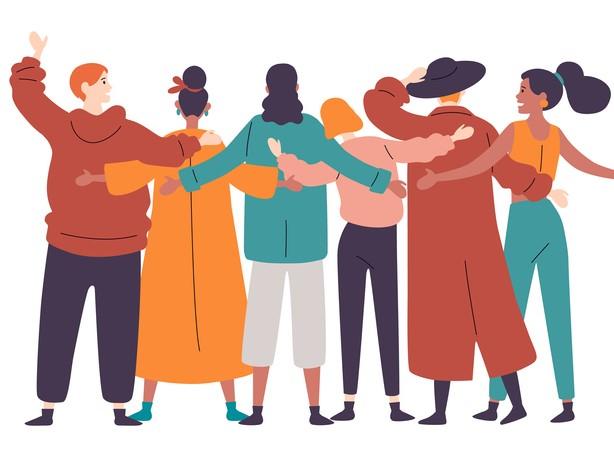
Successful group work is all in the selection process
Group work has many upsides for students. Research shows that it facilitates learning; exposes students to diverse ideas; improves communication and problem-solving skills; and helps students develop skills that employers value. But the benefits students gain from group work can depend on how groups are selected.
Each method used to allocate students to groups has its pros and cons. Here, we consider the most productive ways to assign students into groups as well as best practices for preventing the free rider problem.
- Supporting equity among students in group work
- It takes a village: using a trading game to teach economics
- An examination of student engagement in the classroom
How selection method affects students’ success in group work
The four most common methods used to put students into groups are random selection, student (self) selection, academic (or instructor) selection, and mixed pair (or semi-random) selection.
Random selection
In random selection students are assigned to groups without any order, system or criteria. This group selection method is considered fair because each student has an equal chance of being assigned to a particular group. Completing tasks in randomly selected groups helps students prepare for the workplace, where graduates may be asked to work with people they don’t know. However, the method has been criticised because it does not consider student differences. When random selection is used, the members of resulting teams may be incompatible in terms of personality and/or academic performance. Randomly selected groups are less cohesive and hence may have difficulty completing a task successfully. Random assignment is generally associated with bad team experiences.
Student self-selection
The self-selection method allows students to choose their own group members. This method is relatively easy for instructors to administer, and students generally feel more comfortable and autonomous when they are allowed to self-select into groups. Usually, self-selected groups form according to friendships or shared interests. This can lead to problems around diversity and inclusion, and it may cause a “remainder problem” for students who are left out. There is also the potential that cognitive biases of the group may hinder critical thinking or impede problem-solving due to an echo chamber effect, where the team members reinforce each other’s beliefs.
Academic (instructor) selection
Academic selection involves the instructor assigning students into groups based on certain characteristics such as grade point average, gender or student status (international versus domestic, for example). The aim of this method is to form a balanced heterogenous mix of students in each group. One advantage of the instructor-selection method is that students can learn from each other within their group. The biggest disadvantage is that it takes more time for the instructor to gather information on students’ background. Also, the likelihood that students will complain about their group formation is high due to their lack of control over the team selection process.
Mixed-pair selection
Mixed-pair selection is a combination of student-selection and random-selection methods. This is a two-stage process that involves first asking students to pair up with a friend. The instructor then combines pairs into larger groups based on specific criteria or random allocation. This ensures each student has at least one supporter or friend in the team, and it reduces opportunities for “groupthink”, which is the biggest limitation of self-selected groups.
Comfort versus diversity in group work
Each method used to place students into groups has advantages and disadvantages. Most studies indicate that student selection groups have better learning outcomes. Generally, students who self-select their members are more committed, more enthusiastic about group work and communicate better with each other. However, the likelihood of creating homogenous groups is high when students self-select their group members.
Heterogenous groups, by contrast, include students with diverse knowledge and cultures who may complement one another effectively and enhance each other’s strengths. This also gives students opportunities to identify their own beliefs and biases and so critically analyse their group activity from multiple perspectives.
We suggest that group formation through mixed-pair selection is preferable because it both offers student autonomy and enhances diversity.
How to reduce free riding in group work
The next step to make group work effective is tackling free riding. Free riding occurs when an individual shares in group benefits without making a proportional contribution to group efforts. Free riding can negatively affect the intended group work learning outcomes. The presence of a free rider in group work has a sucker effect (when the harder-working members of the group reduce their efforts in response to having a free rider in the group).
To prevent or reduce free riding, instructors should:
- Incorporate peer-group assessment. Peer-group assessment allows instructors to gather student responses on the contribution of individual members engaged in group work. The tool can be used for summative purpose using Likert scale questions.
- Design the group-work project so each member of the group is responsible for a separate part of the assignment. This prevents free riding because it makes individual inputs visible.
- Ask each member of the group to present their work. Although time-consuming for the teacher, individual presentations can be used to prevent free riding.
- Make groups smaller. Studies indicate that free riding becomes easier as the group size increases. In a small group, group members notice free riding because this practice can considerably add to the other group members’ burden in completing the assignment.
- Make the assignment interesting and challenging using methods such as problem-based learning, authentic assessment or nested learning activities. The likelihood of free riding is higher if the task is less challenging or can be easily completed by one or two members of the group. These assessment methods promote student engagement in the assignment at stages throughout the semester, facilitate feedback opportunities and allow instructors to assess the contributions of group members periodically.
Temesgen Kifle and Suzanne Bonner are lecturers in the School of Economics at the University of Queensland.
If you would like advice and insight from academics and university staff delivered direct to your inbox each week, sign up for the Campus newsletter.




